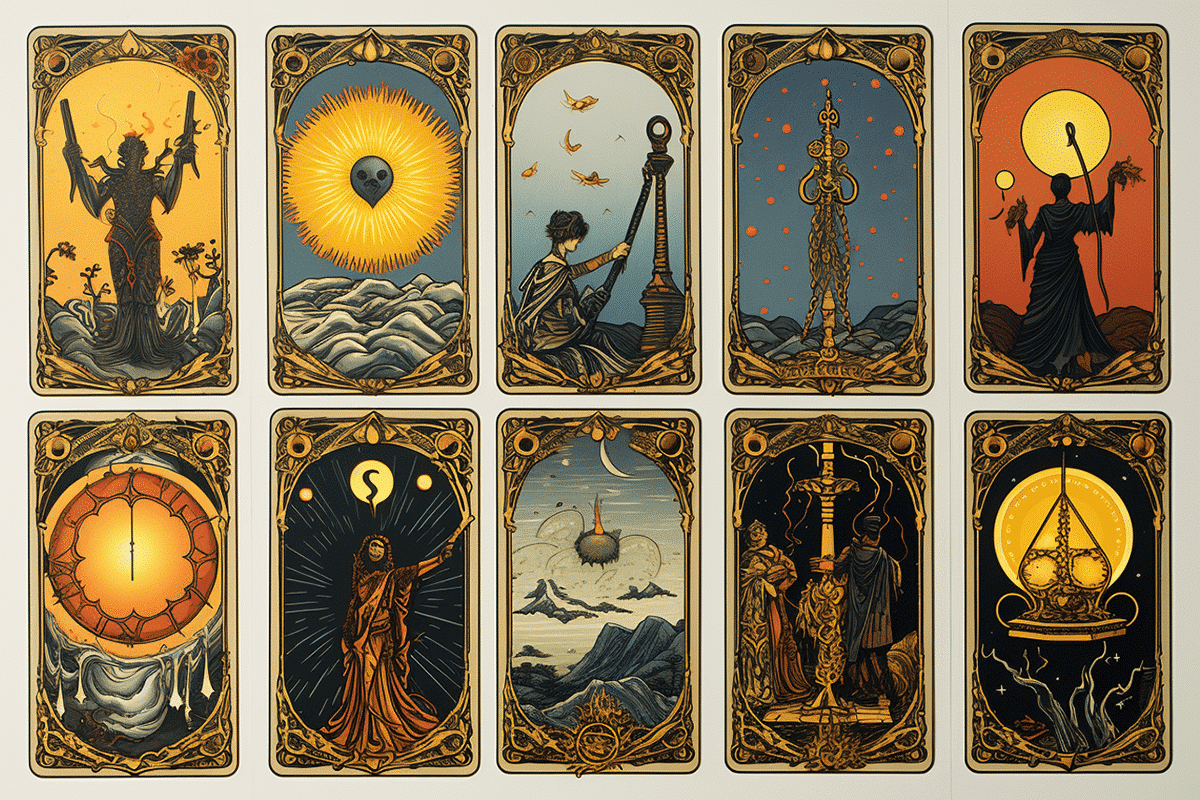The Waite-Smith tarot deck, a mesmerizing fusion of spiritual symbolism and Art Nouveau artistry, is the most popular globally. Its creation, a collaborative effort between Pamela Colman Smith and Arthur Waite, emerged from the mystical depths of the early 20th century. This article delves into the intriguing history, cultural impact, and artistic genius behind this iconic deck, which continues to influence tarot enthusiasts and artists alike.
The Heart of the Deck: Smith and Waite’s Collaboration
Pamela Colman Smith’s perspective on art, encapsulated in her 1908 proclamation, “Learn from everything, see everything, and above all feel everything! Find eyes within, look for the door into the unknown country,” aptly mirrors the essence of tarot reading. Smith’s partnership with Arthur Waite, born from a shared interest in spiritualism and symbolism within the Hermetic Order of the Golden Dawn, led to the creating of a deck that intertwined Waite’s conceptual depth with Smith’s vivid Art Nouveau illustrations. Johannes Fiebig, the editor of a comprehensive book on the deck, highlights its role as a cultural milestone, reflecting a time of personal liberation and artistic awakening, later overshadowed by the world wars.
The Deck’s Cultural Resurgence and Interpretive Depth
The 1970s marked a resurgence in the deck’s popularity, aligning with movements in feminism, anti-war sentiments, and human rights. Tarot expert Johannes Fiebig emphasizes the subjective nature of tarot, where each card invites a personal dialogue, transforming into a reflective mirror for the reader. The Waite-Smith deck, known for its openness and interpretive richness, allows diverse readings, from warnings to recommendations.
Smith’s Artistic Journey and Influence
Pamela Colman Smith’s artistic journey, from her early life in Manchester and Jamaica to her education in Brooklyn and eventual settlement in London, profoundly influenced her work. Immersed in a world of Jamaican folktales, Japanese prints, and theatrical set design, Smith’s style evolved into a vivid, detail-rich art form. This, coupled with Waite’s conceptual depth, led to a deck rich in symbolism, set against quintessentially English landscapes.
The Deck’s Enduring Legacy and Modern Reinterpretations
Despite its historical roots, the Waite-Smith deck has seen numerous modern reinterpretations. Contemporary creators have infused the deck with reflections of diverse communities, addressing aspects of race, sexuality, gender, and more while staying true to the original designs and motifs. Rachel Pollack, another tarot expert, underscores this in her essay, noting the foundational influence of the Waite-Smith designs in these reinterpretations.
The Waite-Smith tarot deck continues to fascinate and inspire more than a century after its inception. Its enduring appeal lies in its ability to resonate with personal truths and serve as a guide in times of uncertainty. Fiebig’s closing remarks echo Smith’s artistic philosophy, urging readers to embrace experience, observation, and emotion, a testament to the deck’s timeless relevance in seeking answers and understanding life’s myriad mysteries.



